Survey
With the aim of informing the electric vehicle profiles and therefore achieving justification, the plan and execution of a survey was considered imperative. The framework of the questionnaire was directed towards identifying the current driving habits of the respondents and how these could be aligned with the transition to low carbon transport.
The purposes of this survey was to find out the general driving trends of drivers and secondly to analyse peoples’ perception of EVs to predict the likelihood of their implementation.
To do so, several questions were formed which addressed the major issue of shifting from conventional and fossil fuelled transportation to low carbon transportation. Key questions of determining whether or not the respondents could have the ability to take advantage of an electric vehicle were the ones related to the daily covered mileage and the access to an existing charging point.
There were 14 questions in total and around 100 participants took part with age ranging from 17 to 80 years old. The full survey and the appropriate results can be found below (Scientists, 2013).
1. Do you drive a vehicle for personal use e.g. driving to work, social excursions etc.?
Yes |
|
93% |
No |
|
7% |

2. How knowledgeable would you consider yourself to be on the topic of Electric Vehicles?
Very |
|
7% |
A little |
|
48% |
Not very much |
|
45% |
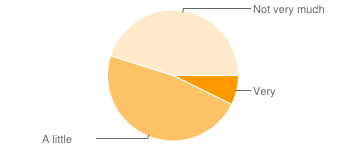
3. How would you describe your current parking situation at home?
Off-street (net) |
|
71% |
Public or on-street parking |
|
26% |
Other |
|
1% |
Don't know |
|
2% |
|
|
|
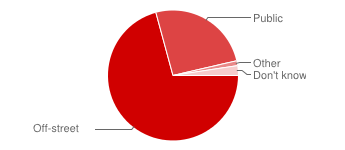
4. In a typical week, what is the maximum number of passengers, including yourself, you need to fit in the vehicle you drive most often?
1 |
|
26% |
2 |
|
33% |
3 |
|
22% |
4 |
|
10% |
5 |
|
5% |
6 or more |
|
0% |
Don't know |
|
5% |
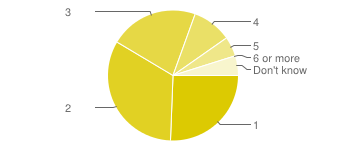
5. For the vehicle you drive most often, does it need to have hauling or towing capacity?
Yes |
|
9% |
No |
|
81% |
Don't know |
|
10% |

6. Do you currently have access to recharge a plug-in electric vehicle at your workplace, school, or other weekday destination?
Yes |
|
10% |
No |
|
83% |
Don't know |
|
7% |

7. How many vehicles are there in your household?
1 |
30% |
|
2 |
50% |
|
3 |
|
9% |
4 or more |
|
11% |

8. Approximately how many miles do you drive on an average weekday, including commuting and other errands?
Less than 20 miles |
|
30% |
20 miles |
|
27% |
40 miles |
|
17% |
60 miles |
|
4% |
Over 60 miles |
|
18% |
Don't know |
|
4% |
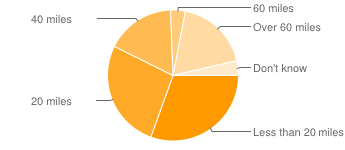
9. I would be willing to pay more to purchase a plug-in electric vehicle if I could recover the additional cost within 5 years.
Strongly agree |
|
4% |
Agree |
34% |
|
Neutral |
40% |
|
Disagree |
16% |
|
Strongly Disagree |
|
6% |
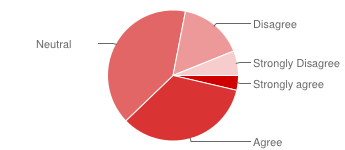
10. I would be willing to plan and organise my transportation habits in order to use an electric vehicle.
Strongly Agree |
|
2% |
Agree |
28% |
|
Neutral |
33% |
|
Disagree |
28% |
|
Strongly Disagree |
|
9% |
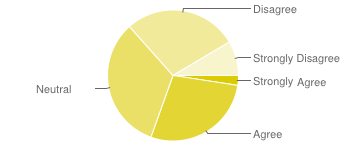
11. Having access to plug-in electric vehicle charging at work would increase the likelihood of considering a plug-in electric vehicle in my next purchase.
Strongly Agree |
|
11% |
Agree |
55% |
|
Neutral |
18% |
|
Disagree |
|
10% |
Strongly Disagree |
|
6% |
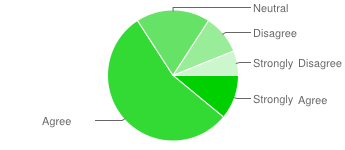
12. Plug-in vehicles are an essential part of UK’s transportation future for reducing use fossil fuels use and the impacts of climate change.
Strongly Agree |
|
9% |
Agree |
44% |
|
Neutral |
30% |
|
Disagree |
12% |
|
Strongly Disagree |
|
5% |
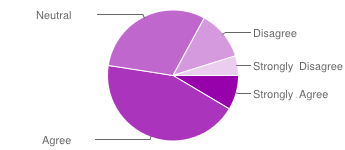
13. I would be willing to integrate an electric vehicle in my household to contribute and play my part in reducing the effects of climate change.
Strongly Agree |
|
4% |
Agree |
46% |
|
Neutral |
32% |
|
Disagree |
12% |
|
Strongly Disagree |
|
6% |

14. Which age group category do you fall under?
Under 17 |
|
0% |
17- 30 |
67% |
|
31- 50 |
20% |
|
51- 65 |
13% |
|
Above 66 |
|
0% |
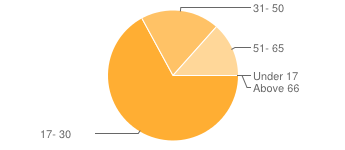
Conclusions
The main points that the survey relayed was, for example the number of miles driven per day, and this information was used to determine the average energy consumption for the vehicle. This was important as it also informed how much recharging would be required per day. Another key element was to define the behavioural patterns of car users as this would inform the charging rate scenarios, and would give an indication of the spread of electric vehicles in order to quantify the impact of these loads on the wires. Finally, the survey also gave an indication of the future feasibility of integrating electric vehicles into the domestic housing network. This supported the future scenario predictions of progressive levels of electrification with the integration of electric vehicles.